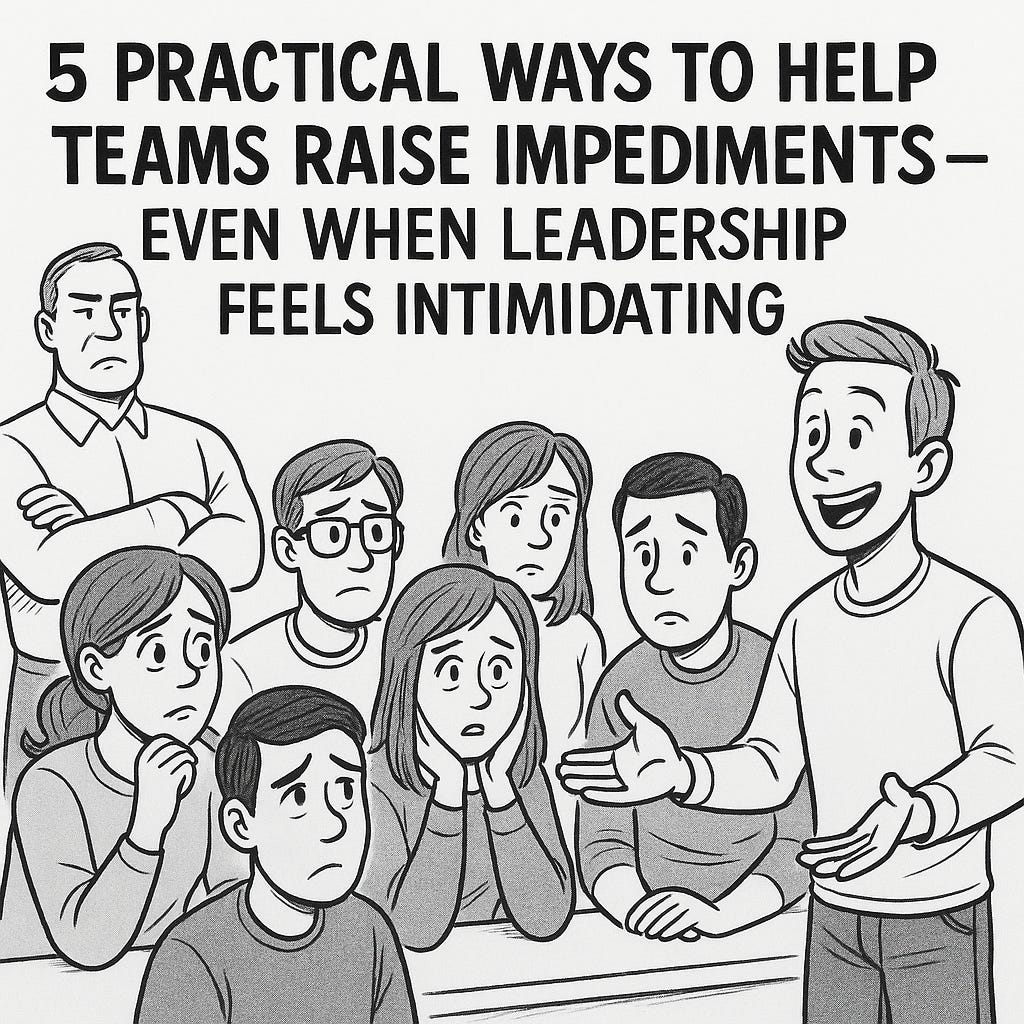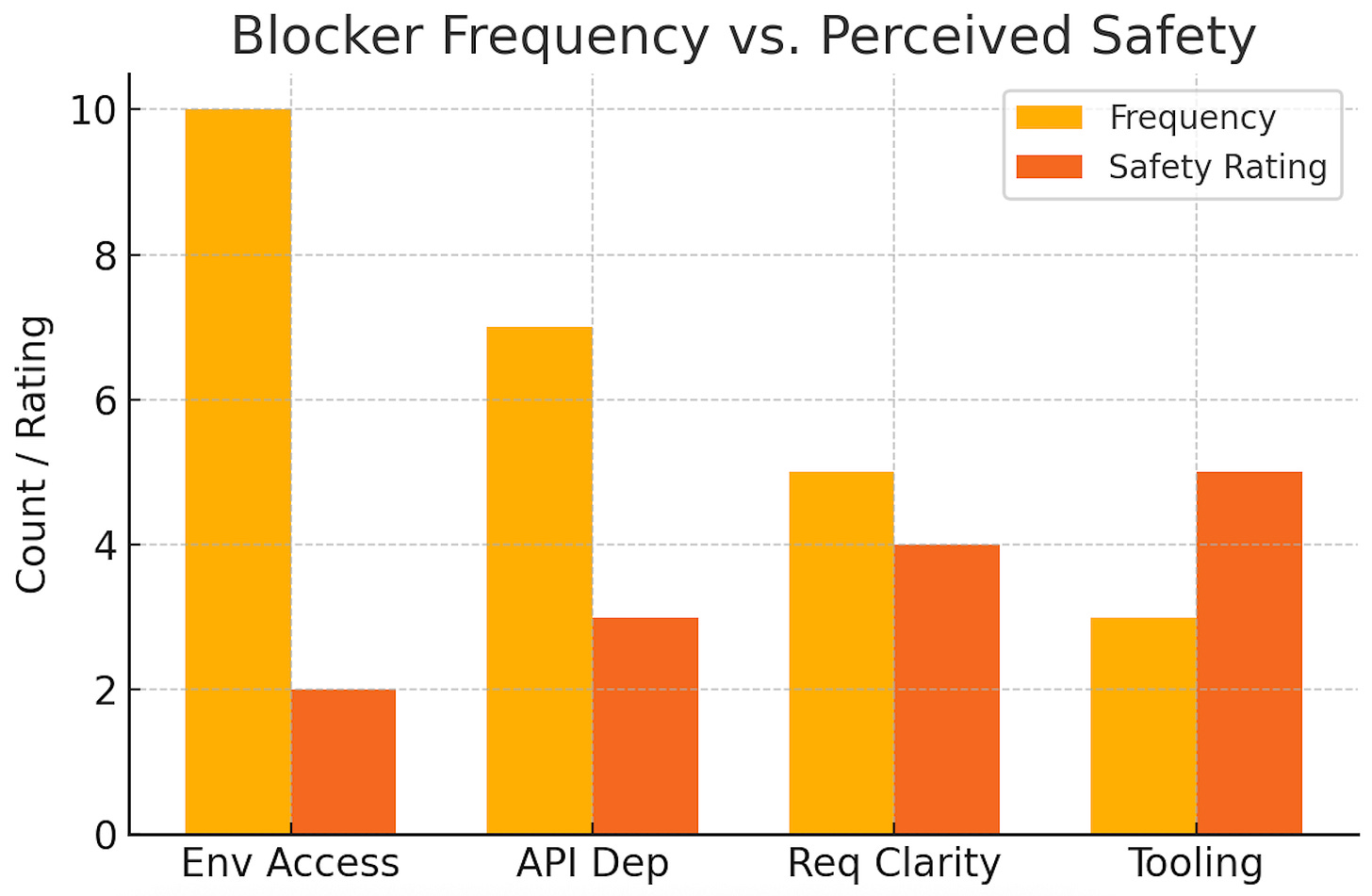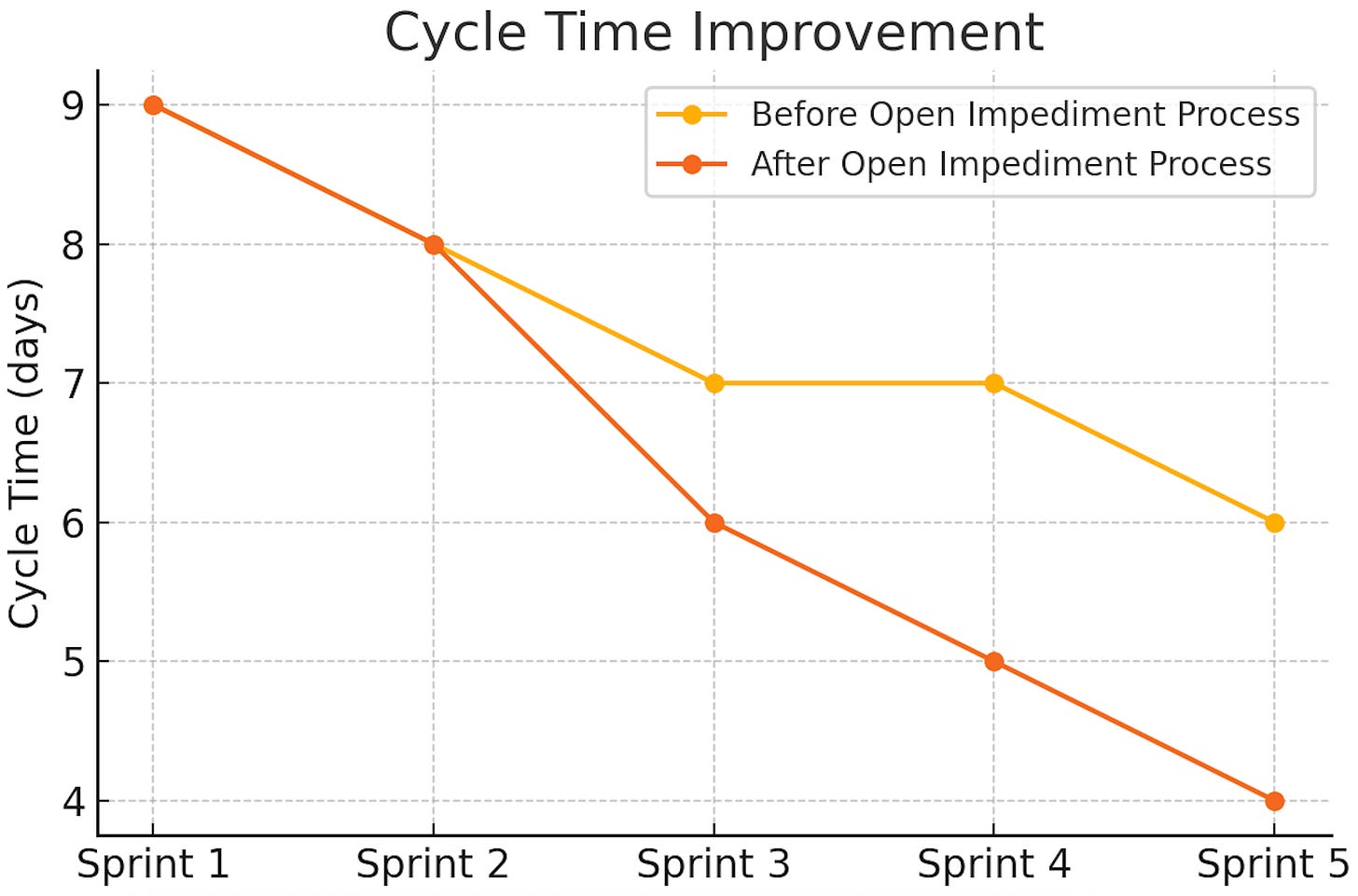5 Practical Ways to Help Teams Raise Impediments — Even When Leadership Feels Intimidating
Does your team keep quiet about blockers because they’re worried how leadership will react? Here’s the playbook I used to turn fearful silence into a healthy, open flow of impediments.
A Short Story
Three sprints ago, my team’s throughput dropped by almost 40 %. Nothing in the stand-up hinted at trouble, but tasks kept slipping. A quick set of one-to-one chats revealed the truth: people were afraid to surface impediments.
Why?
The last time someone raised a blocker, a senior manager had replied, “Find a workaround; we don’t miss targets.”
The message interpreted by team: No bad news, please.
I knew we had to rebuild psychological safety fast.
Below are the steps we took—and how you can repeat them.
A bit more context:
I’d been in that meeting where the manager shut the engineer down. The moment the call ended, Slack went silent and Jira stayed static. We lost two full days chasing workarounds that never existed. Those two days cost us a demo with the sales team. That sting became my fuel to fix the culture.
Strategy 1: Create a Private “Pulse Check” to Surface Hidden Blockers
Many team members simply won’t risk public embarrassment, no matter how often we chant “safe space.” The workaround? Give them psychological distance through anonymity.
Action Steps
Launch a three-question anonymous survey (Google Forms):
“What is blocking your work right now?”
“What help do you need?”
“How safe do you feel raising this openly (1–5)?”
Share aggregated results with the team first. We spent ten minutes silently reading, then ten minutes discussing patterns—no names, no blame.
Present a one-page summary to leadership: blockers listed, names removed. Framing it as “team signal” rather than “individual complaints” lowers defensiveness.
What happened next:
Leadership saw five identical blockers on environment access. Realising it was systemic, they approved an infra change within 24 hours—something the team had waited six weeks for.
Tip
Numbers plus anonymity break the ice; leadership sees patterns, not individuals.
Strategy 2: Reframe Impediments as Business Risks, Not Personal Failures
Executives speak the language of risk and return. If we package blockers that way, they listen.
Action Steps
Translate each blocker into a risk statement:
“API dependency delay ⇒ launch slips by two weeks; revenue impact ≈ ₹ 8 lakhs.”Add a simple RAG (Red–Amber–Green) status. Red items get agenda time in every leadership call.
Ask leadership to prioritise risk removal, not assign blame. We literally labelled the Confluence page “Risk Register” instead of “Team Issues,” and tone changed overnight.
Tip
Executives respond better to quantified risk than to vague complaints.
Strategy 3: Create a Transparent Escalation Path
Silence thrives in ambiguity. When everyone knows exactly how and when a blocker escalates, fear drops.
Action Steps
Add an “Impediment” swim-lane on the team’s Kanban board.
Define a two-step rule:
After 24 hours unresolved, blocker moves to “Escalate”.
After 48 hours, Scrum Master shares it in the leadership Slack channel.
Review the lane daily; close the loop once the blocker is cleared.
We posted an SLA next to the board: “Blocker visible > 48 hrs → automatic escalation.” No debate, no blame—just a rule.
Side-effect benefit:
Engineers began moving tasks proactively to “Blocked” because they trusted the process would help, not punish.
Tip
A visible lane makes silence impossible—everyone sees ageing blockers.
Strategy 4: Coach Leadership on a “No-Blame Response Model”
Most leaders don’t want to be scary—often, they simply lack a script for supportive responses.
Action Steps
Run a 15-minute micro-workshop with leaders:
Step 1 Listen → Step 2 Clarify impact → Step 3 Ask, “How can I help?”
Share real examples of constructive vs. destructive replies. We anonymised quotes from past meetings so leaders could see the effect of their words.
Agree on a team charter line: “Raising impediments is encouraged; blame is off-limits.” We printed it on A4 sheets and taped them in every meeting room.
Tip
When leaders commit publicly, teams notice and trust grows quickly.
Strategy 5: Celebrate Every Blocker Removed
Positive reinforcement cements the new habit of speaking up.
Action Steps
In Sprint Review, highlight one impediment that was raised and resolved. We displayed a simple before-and-after slide: blocker, action, outcome.
Thank the person (or anonymous survey) that surfaced it. A round of applause costs nothing and signals cultural shift.
Track cycle-time improvement; show how open escalation shortens delivery. After three sprints, our average cycle time dropped from nine to six days.
Tip
Positive reinforcement locks in the new behaviour.
Your Challenge This Week
Run a one-question anonymous survey: “What’s blocking you that leadership should know?”
Share the aggregated answer at your next sprint review.
Observe how the conversation changes.
Start small—results compound fast.
Ready to Turn These Strategies into Action?
Join the Scrum Master Bootcamp!
Want to put these strategies into action and experience the impact firsthand? Join my Scrum Master Bootcamp, where you’ll work through these exact challenges and build the skills needed to drive real value in your team. This isn’t just theory — it’s hands-on practice that will transform how you manage leadership’s expectations.
👉 Click to explore more and start mastering the tools and techniques that can change the way you work as a Scrum Master.
Don’t just learn — experience the difference in real time.
Why Subscribe
Each week, I share battle-tested strategies, messy lessons, and practical tools that help Scrum Masters, Product Owners, and change agents like you make sense of chaos — without sugar-coating it.
If you found this useful, subscribe.
This isn’t theory. It’s real work, made a little easier — one step at a time.
Thanks for reading Strategy For Success! Subscribe for free to receive new posts and support my work.
📝 Your Feedback Matters!
I have started writing this newsletter and your feedback will help me improve it further. You may leave your feedback in Comment on how can I make this newsletter valuable for you.







